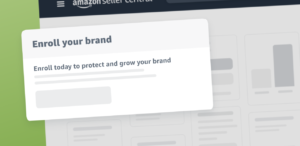
Unlocking Amazon Success: Mastering Total ACOS Optimization
Introduction: In the dynamic realm of Amazon advertising, success hinges on mastering key metrics, and
The online marketing strategy in this guide can be used in many different industries, but it’s specifically geared towards independent B2B professionals. For example, business consultants, IT service providers, and business financial advisors are a few of the types of people who will get the most out of this.
Business to business online marketing is different than consumer marketing. The purchase cycle tends to be longer and more complex. In fact, research has shown that the purchase process is about 57% complete before a buyer makes the first contact.
The B2B online marketing system outlined in this guide works with the longer purchase cycle to help you attract customers and stay top-of-mind. Your customers expect to do research online, and if you’re not catering to that process, you’ll be left out of the decision.
By systematizing this process, you’ll save time and money. You are probably bombarded with new ideas for online marketing tactics every day by gurus and experts. It’s hard to know what to focus on to make an impact. Creating a system, and following through, will reduce this stress and weed out the tactics that don’t fit with your system.
The goal for this system is to consistently provide value to your target audience, then convert your audience into clients.
This isn’t about finding the latest tactics that will “trick” people, or about using cutting edge technology. Most likely, you got into business because you want to help people and make a positive impact on their business. This online marketing system follows that same principle.
My goal is to make this process simple to follow, without needless jargon or tangents, so that you can start implementing it right away. Many B2B online marketing plans are overly complicated for an independent business owner. This will give you all of the necessary steps to get started.
It will be tempting to skip this step. Many business owners want to be available to anyone who will hire them. It’s OK to take on work from anyone, but for the sake of marketing, it’s much easier when you have a narrowed focus. If you skip this step, the rest of the system won’t work nearly as well for you.
An easy way to narrow down your target audience is to define your ideal client. Think about your best 1–3 clients. What traits make them so great? Why are they the best? What makes them ideal for your business? Use your workbook to brainstorm your answers. This will give you insight into the type of client you want to take on in the future.
Going either of these routes will narrow your audience significantly. You can also combine both of them to narrow further. For example: a web designer who only creates e-commerce websites for nonprofits.
It’s important to narrow your audience when marketing online, because if you sound generic, you’ll get lost among your thousands of competitors. The Web is huge, and competition is only going to increase. Defining your audience will help you stand out among the sea of “me too” companies.
Yes, your marketing will turn some people away who don’t fit your target. But you will gain the people who do fit your definition, and they will be excited they found you. You’ll stand out as the expert in that area.
Your core message provides a clear answer to these two questions:
While answering these, think about what makes you unique. What sets you apart from your competition? This will help your core message stand out from everyone else.
The rest of your marketing will build from the answers to these questions. By defining these answers, you can easily create any communications for your business such as an elevator pitch, homepage tagline, or content creation topics.
Although these questions are short and simple, some people struggle with answering them. If you’re having trouble coming up with good answers, it might be helpful to ask past clients what benefit they received by working with you. There are also prompts to help you find the answers in the workbook.
People often mistakenly believe that B2B services are purchased based solely on logic and facts-based research. Your prospect must trust you and trust that you will provide the desired outcome. Your first opportunity to show your prospect that you understand them, and can help them, is through your core message. This online marketing guide contain all the essentials to help b2b professionals.
Bringing Together Step 1 & Step 2
Combine everything from Step 1 and Step 2 to create your internal positioning statement. This will help guide you and keep you focused when you start publishing marketing material for the public. Here’s a formula you can use by filling in the blanks. You may need to change the order of the blanks for your industry.
I help ___{{target market}}___ by ___{{service(s)}}___ in order to ___{{benefit}}___ because ___{{why it’s important}}___.
Refer back to this statement as you work through steps 3–5. It will make each of those steps much easier.
Now that you know who you are targeting and your core message, it’s time to build out your website. Your website will act more like a platform for your message, instead of a basic brochure for your services. As being b2b professionals sometimes you stucks in online marketing issues but follow this online marketing guide that is specialy made for b2b professionals.
When a visitor comes to your website, there’s a good chance they’ve never heard of you before. They’re not ready to become a client yet. At this stage, you want to provide as much value as possible to get them to stay on your site and convert into a subscriber.
A straightforward approach to meet this goal is outlined below.
When someone signs up for your free offer, this is just the beginning of your relationship with them. After sending them the free offer you promised, a sequence of several emails over the next 1–2 weeks should follow.
The marketing automation system I recommend is ActiveCampaign. It’s a powerful, easy to use, tool that allows you to send automated email sequences and other email campaigns. It also has a CRM built in, so you can manage your leads and clients with it as well.
A simple email sequence for new subscribers is outlined below. You can change it based on your industry or specific needs. Each step is an email that is sent automatically with 1–2 days in between. Use the workbook to brainstorm ideas for your engagement sequence. This online marketing guide is designed by experienced b2b professionals.
This is the obvious first step. Make sure it is to deliever it immediately, and is easy to access.
This is the perfect time to find out what your new subscribers are struggling with. Ask them to reply to the email and tell you the answer to this question: “What is your biggest struggle (or frustration) when it comes to XYZ?” Replace XYZ with your industry or type of service. For example, an IT service provider might ask, “What is your biggest frustration when it comes to IT in your office?” This question allows people to open up to you. It also gives you valuable insight into the type of help people are seeking.
This could be another related article, video, or other type of content. It could also be a round-up of your most popular content. This will give them more valuable resources, and help them get to know you better. It is up to you if you want to send this all in one email, or spread it out over 2–3 emails.
At this point, your new email subscriber has received a lot of great information from you. They are probably becoming familiar with you and/or your company. It’s time to make a small ask. Depending on your business, this could be a 15 minute phone call with you or asking them to buy your book. The type of offer you make here will vary based on your business and what you have to offer.
Once the prospect has moved through your engagement sequence, they can be moved into your general email list. Send content to people on your email list on a regular basis. This could be once per day, week, or month. It is up to your discretion how often you keep in touch with your email list.
It might seem difficult to know what to send to your subscribers. Here’s a list of ideas to send them:
Many business owners worry that they are “bothering” their email subscribers, but this is not the case. Most people are on your email list because they are interested in learning about your topic. They’re looking for answers that you can provide. If someone doesn’t want to hear from you anymore, they can always unsubscribe. But you will find that the majority of subscribers will value your insight.
Outreach and attraction can be the most difficult part of the marketing plan because there are so many options. Use your target audience to guide your decisions in this area. For example, there is no point in using a certain social media platform if people in your target audience aren’t using it.
Take some time to make a list of all of the websites, blogs, podcasts, social media platforms, forums, news sites, etc. your target audience visits frequently. You may need to do some digging to create an a thorough list, but it will be worth it. This list will drive where you spend your time and money to connect with the audience.
Outlined below are a few ways to connect with your audience and drive traffic back to your website. By help of this online marketing guide that is essential for b2b professionals, you can attain yout goals.
Social media can be a great way to connect with people in your target audience. It’s also easy to waste a lot of time browsing social media. If you want to use social media as a way to drive website traffic, be sure to choose the platform(s) your audience uses. The most popular platforms for B2B are: LinkedIn, YouTube, Facebook, and Twitter.
When it comes to social media, quality is preferable to quantity. Choose 1 or 2 networks, and stick to those. You don’t need to be on every social network. It’s more important to make better connections with people on 1 network, than spread yourself too thin by trying to use 4 different networks.
A great way to build your audience is by borrowing the audience of someone else. This could be in the form of guest blogging (writing a blog post for someone else’s blog with a link back to your own website), or appearing as a guest on a podcast or video interview. This will give you immediate exposure to audience who is already interested in your topic. Just follow all the steps in this online marketing essential guide.
Be sure to choose your appearances strategically. The host’s audience should align with the type of client your are trying to reach.
If you have the budget, paid advertising can be a quick way to get visitors to your website. I go into more detail about paid advertising in this article. It’s important to keep in mind that you need to target your ads very specifically. This is where your target audience research will come in handy. Narrow down your audience or keywords as much as possible. An easy way to lose a lot of money is going too broad with your ads. Online marketing is a big field and this essential guide for online marketing is to help all b2b professionals.
Make sure each ad has a specific purpose. Send traffic to a focused landing page or article with a clear call-to-action.
Reaching out directly to people who are your ideal client can be a great way to generate interest in your services and even drive traffic back to your website. These emails should be personalized, one-on-one emails, and not automated blasts to a group of people.
Send an introduction email to try to start a conversation. There is no need to be pushy or “salesy” with these emails. Try to keep the focus on the recipient and provide value to them. Keep it short and personal, and end with a question or call-to-action. Don’t forget to follow-up. People are busy and might overlook your first email.
Your website will naturally start to rank better in the search engines as you consistently add valuable content over time. Search engines love websites that provide helpful content. A search engine’s job is to provide the searcher the most relevant content related to a search term.
There are many other factors that go into search engine rankings. These factors will shift over time as some become more relevant than others. If you provide your website visitors with the best experience possible, you will naturally do well in the search engine rankings. A few factors to keep in mind are: in-depth content, mobile responsiveness, links from other websites, SSL security, and links from social networks back to your site.
SEO can be a deep and confusing topic. It’s a long-term strategy that you can benefit from over time if you focus on providing the best experience possible for your website visitors.
Although this is a guide for online marketing, you can’t discount in-person networking. Meeting people in person is still a valuable way to grow your business, even in this digital age.
When you meet someone in person, they will almost certainly Google you later and check out your online presence. Your online reputation will affect your personal reputation, so it’s important that they’re both in sync with each other.
This online marketing guide for B2B professionals comes down to a couple of simple concepts: 1) communicate your message to your ideal client, and 2) consistently provide value that converts your audience into clients. This online guide is to help b2b professionals to attain their goals.
Visit our services page or contact us to get any service. You can find more information like this here. We also provide online marketing services to boost your business. We have strong history of providing solutions to numbers of b2b professionals.

Introduction: In the dynamic realm of Amazon advertising, success hinges on mastering key metrics, and

Building and managing a unique brand management can be tricky. Amazon Brand Registry is here

Introduction: Welcome to the dynamic world of e-commerce! If you’ve set up your Amazon store

Learn about crafting high-performance product listings in the Amazon store with this guide. What can